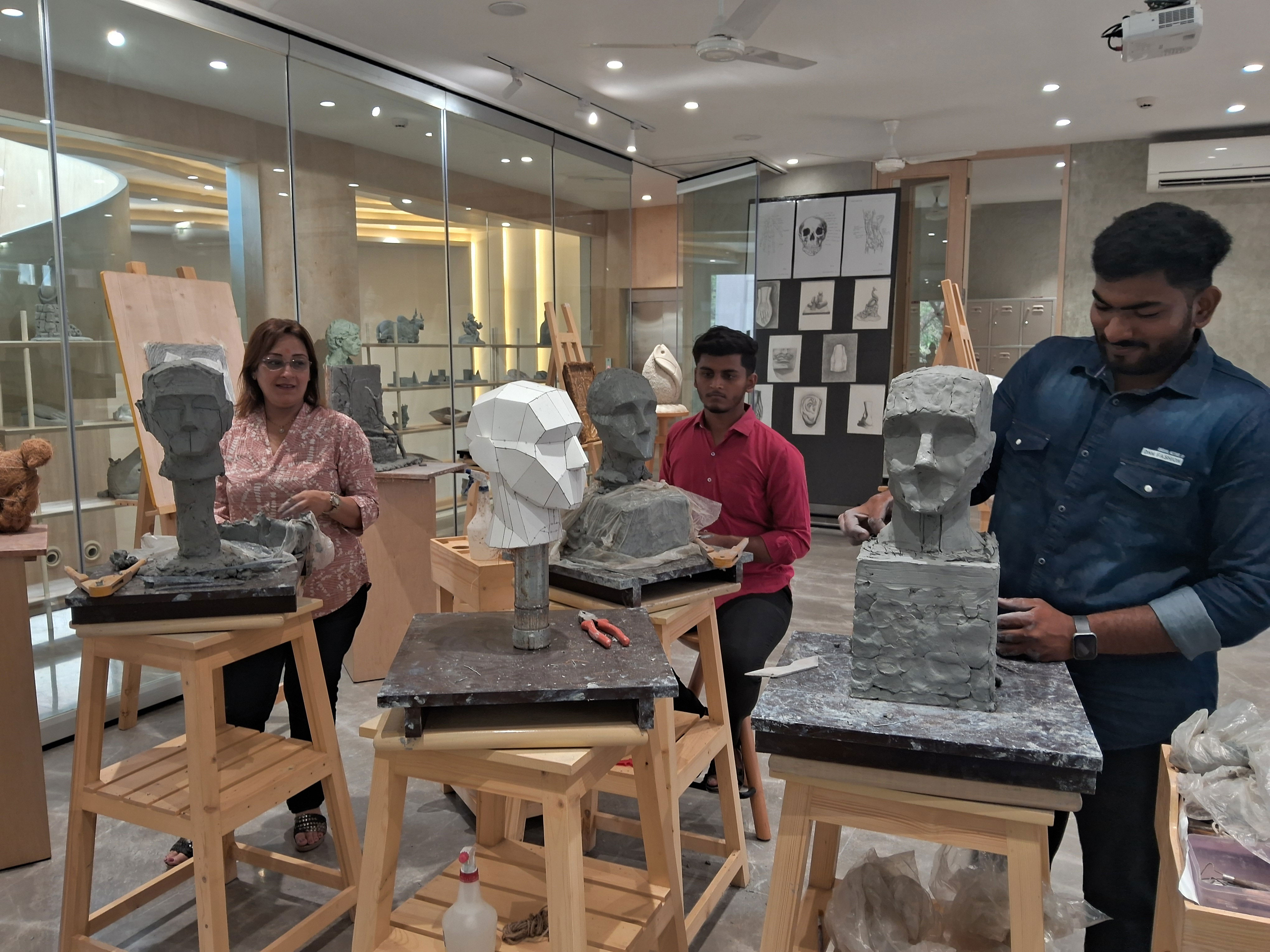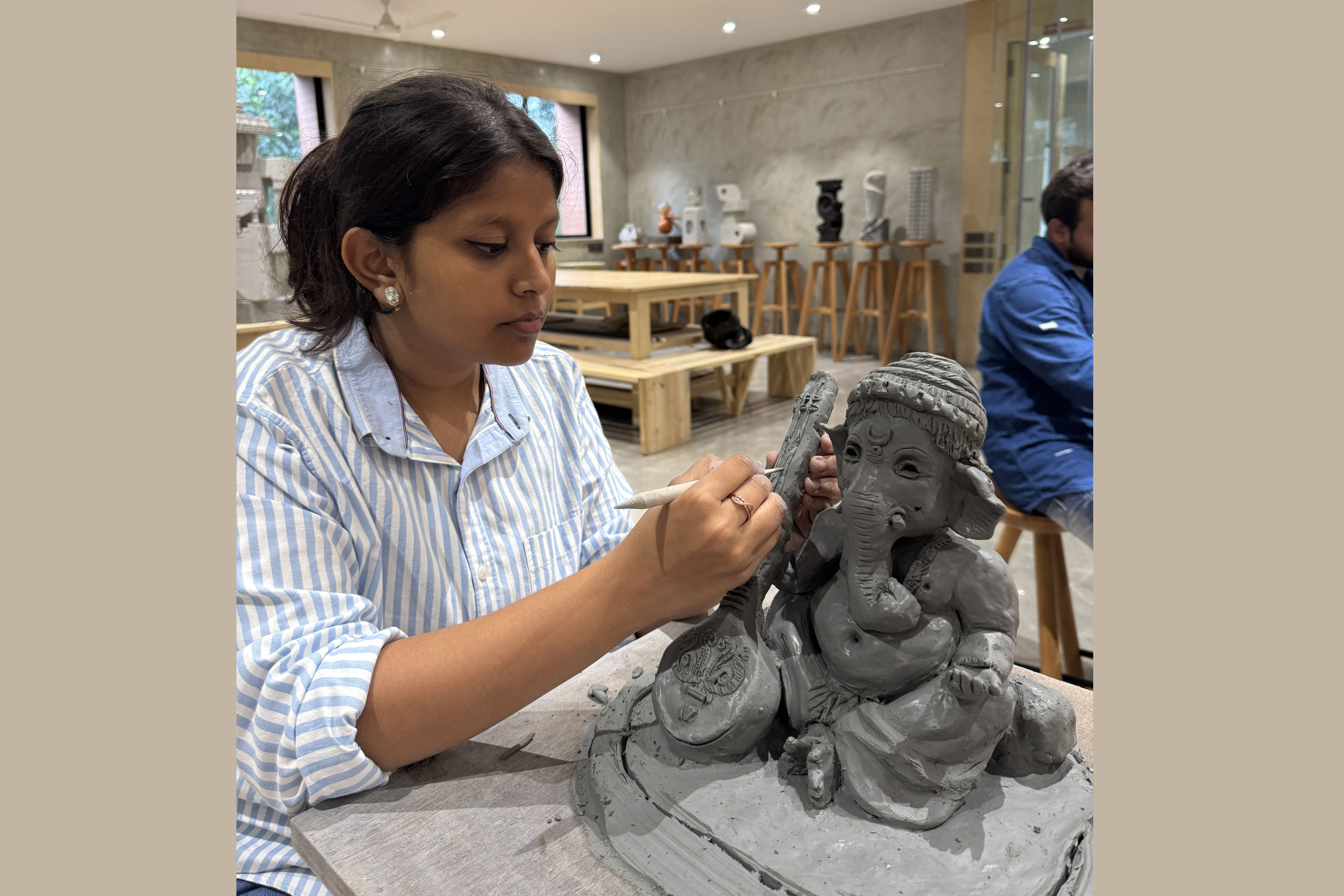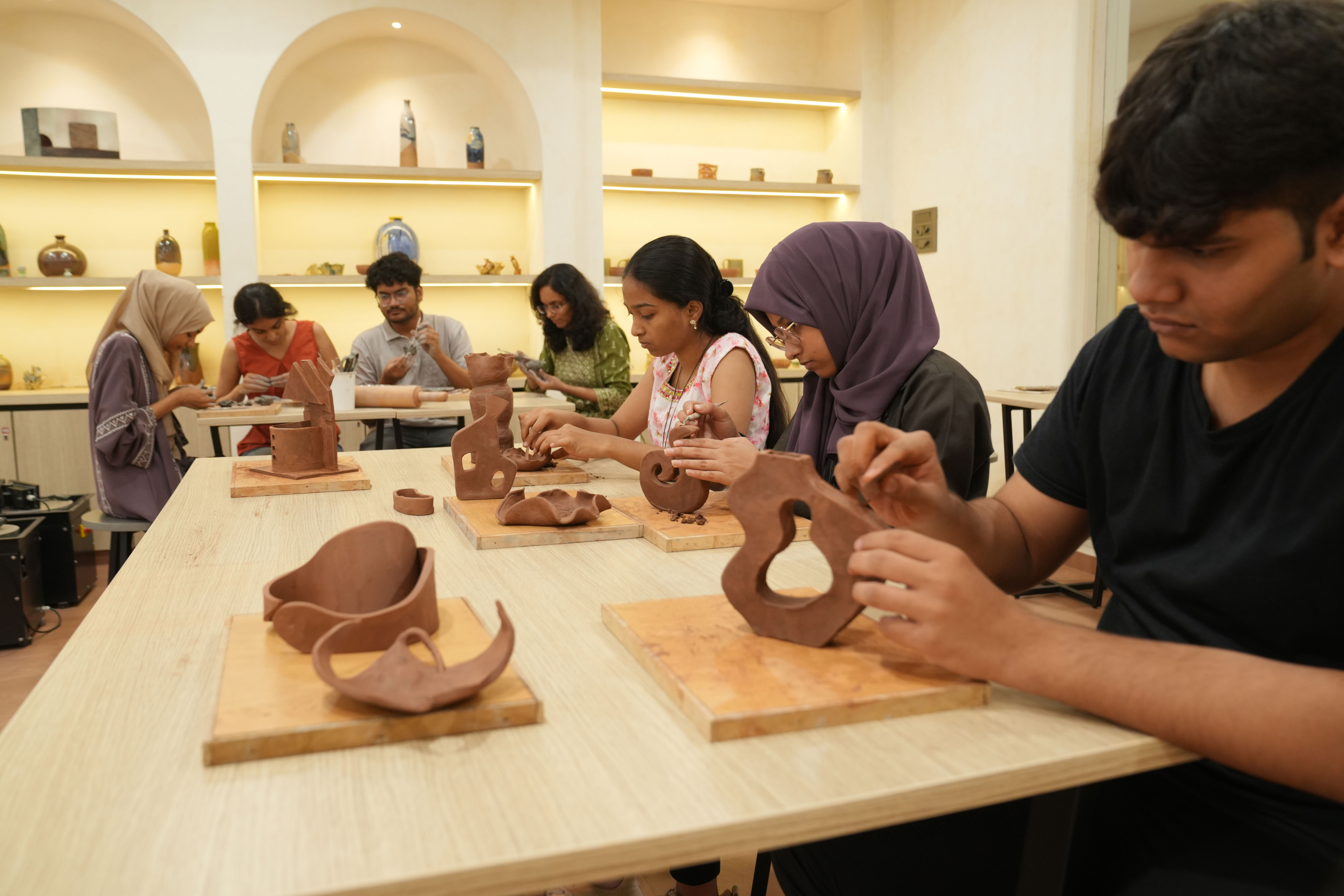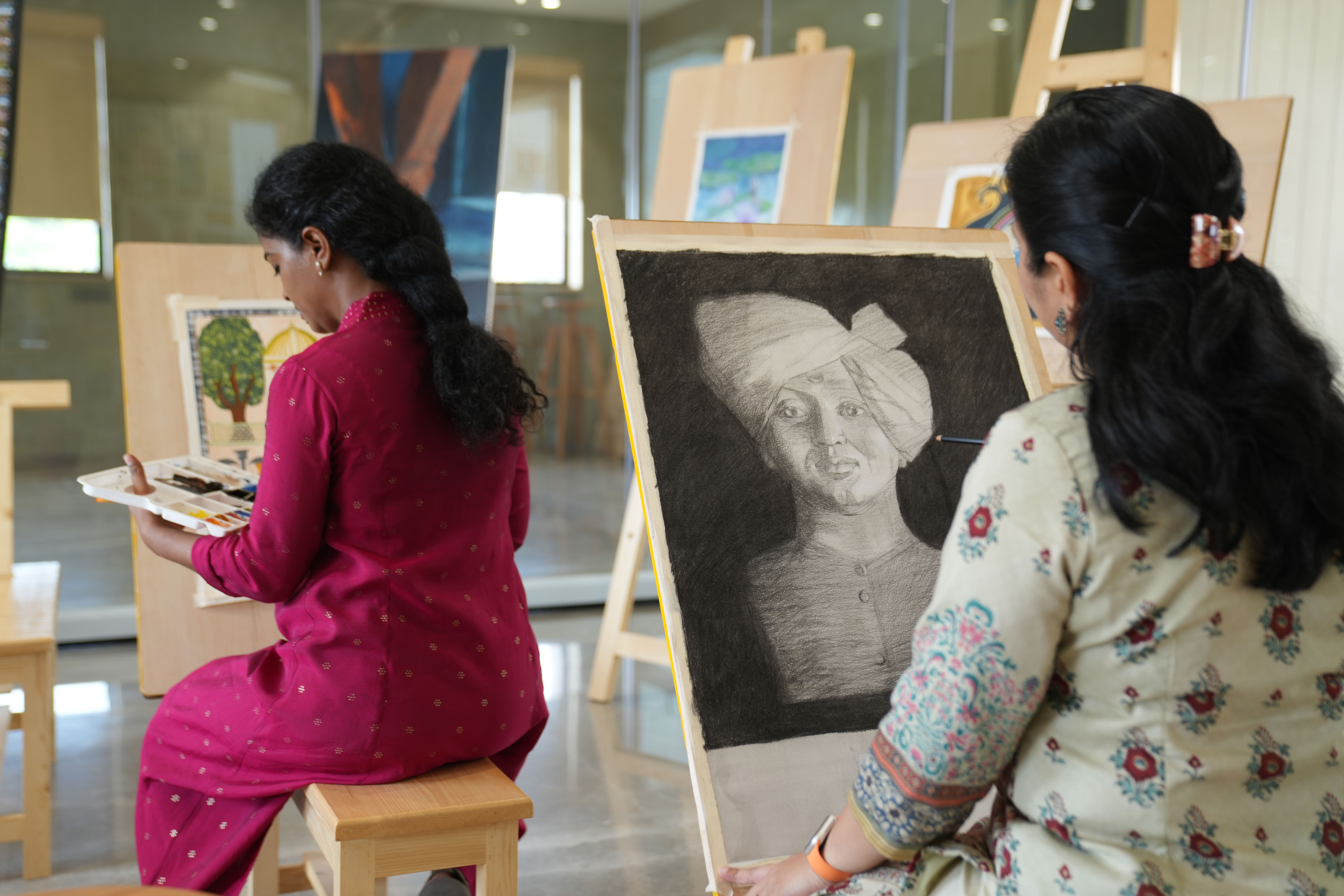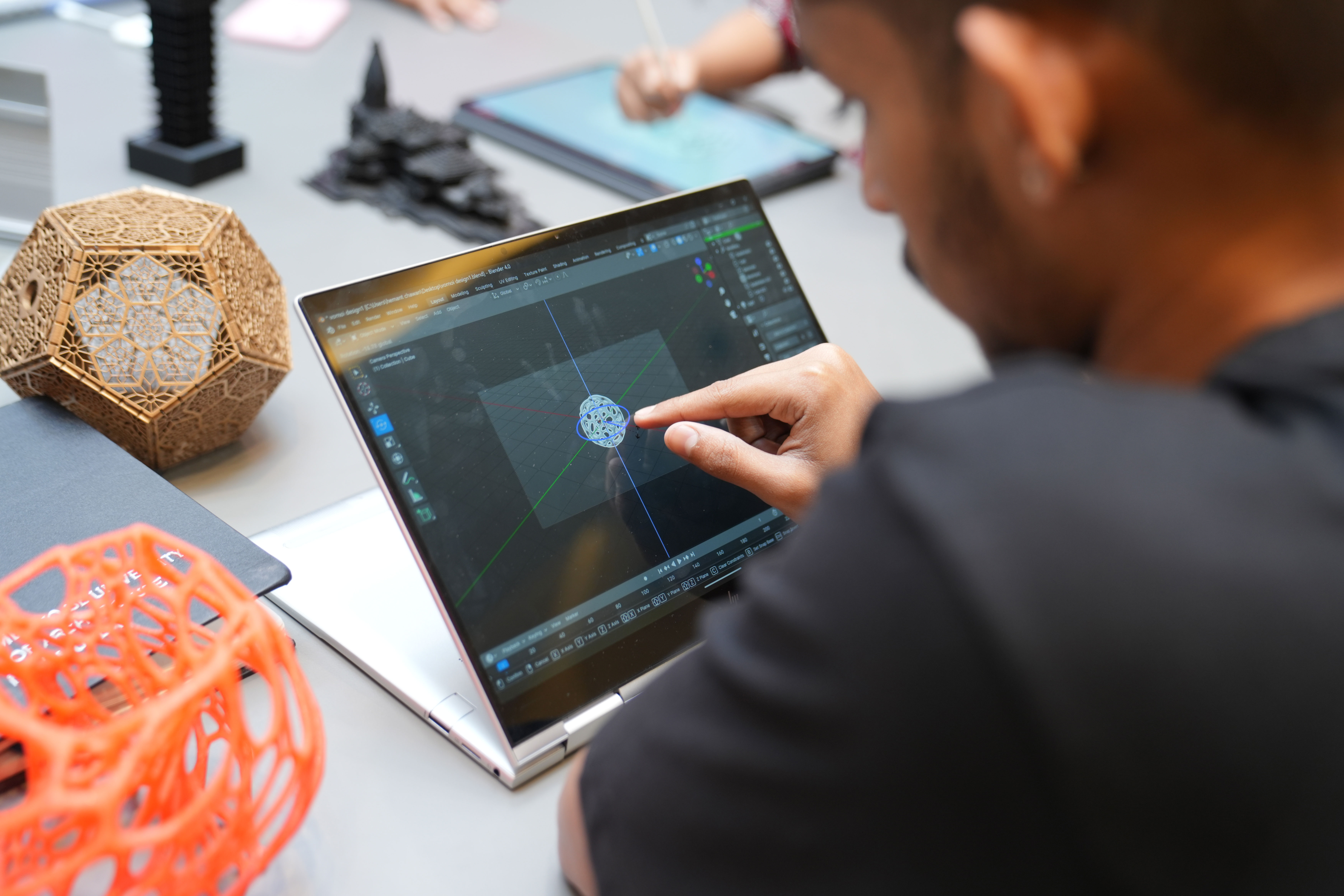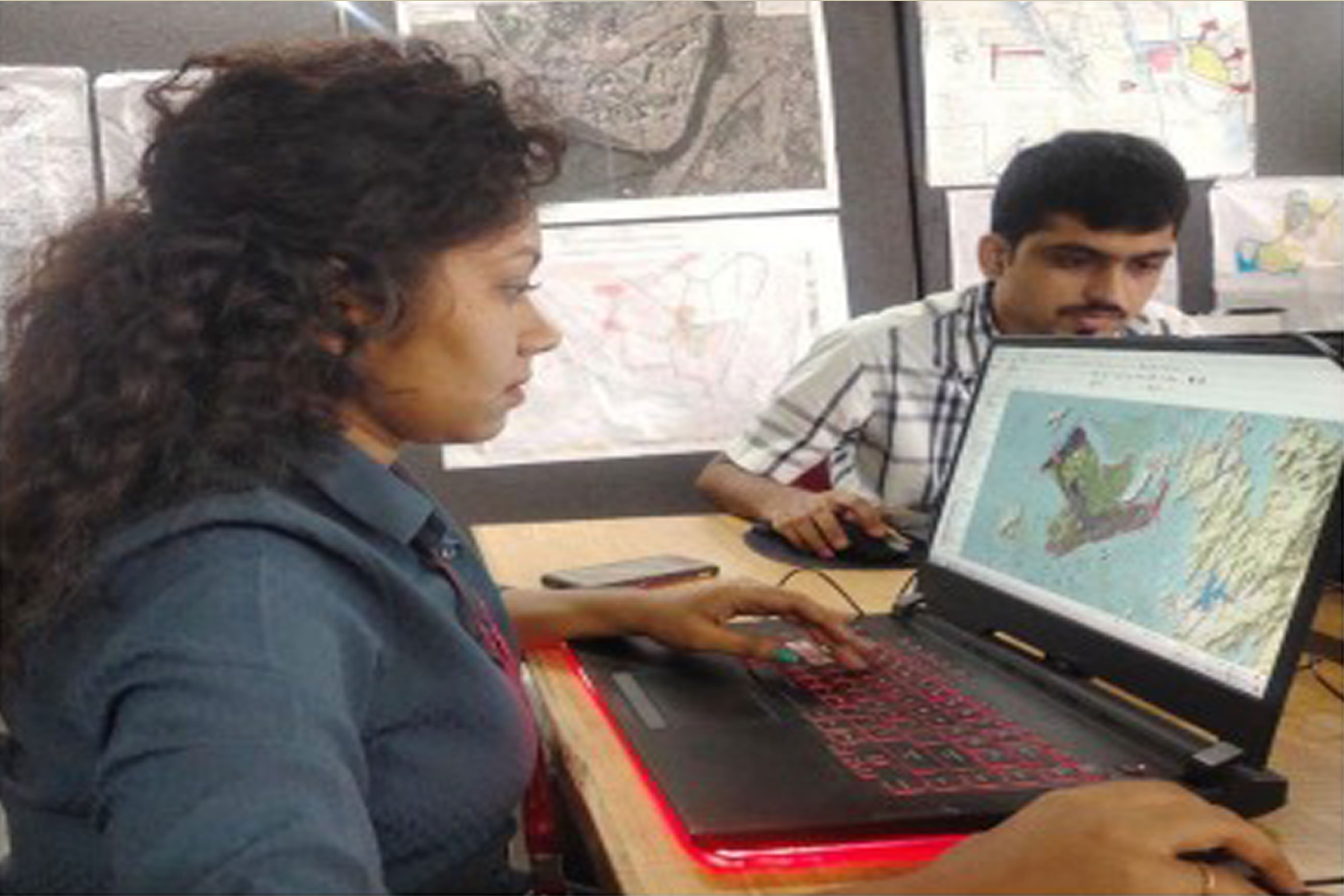About the
Program
This programme introduces the 3D structure and provides students with a general understanding of the processes, equipment, and materials utilised in sculpture making. This studio course offers an introduction and practical experience in developing sculptural work. Hands-on experimentation with several media and differing approaches to three-dimensional form are referenced with respect to historical and cultural influences. Students use clay, cardboard, paper mâché, wire or other materials. Web-enhanced presentations regarding relevant artists, their works, and their techniques, will be followed by in-class studio work. Students investigate the connections between concepts and techniques of construction. Introduction to the contemporary practices in the commercial Sculpting practices by field visits and meeting the current practicing artists.
Program
Objectives
- Analyse and review the elements and principles of art & design with reference to visual art (sculpture).
- Develop capacity in various techniques and materials relevant to the ever-changing art practices in 3D sculpture and relief murals
- Recognise the historical and cultural influences on Sculptural practices.
- Develop a presentable Portfolio
- Communicate ideas effectively using the vocabulary of art and documentation of the same.
Program
Syllabus
1. FOUNDATION WEEK FOR VISUAL ARTS
Learning Fundamentals of arts like line, colour, value, composition, form, brush work and perspective, rhythm, these fundamentals can provide a foundation for your art as you discover new ways to compose pieces.
2. BASIC OF SCULPTURE
Training begins with the understanding of three-dimensional art, which includes – sketching, armature building, clay modelling etc. Clay is highly versatile, extremely easy to work with, and the ideal modelling material for the beginner as well as the seasoned sculptor.
3. EXPLORATION OF MEDIA TECHNIQUES
There will be exploration of how methods of artistic production, materials of artistic transformation, and practices of makers participating in various artistic movements have created and sustained the conversations so integral to contemporary sculptural practice. Through a series of projector screenings, assigned readings, and discussions, students will gain a familiarity with the historic events and trajectories that continue to produce associative canons and relational movements, forming the foundation of their chosen discipline. The class will explore methods of artistic production and materials for moulding and casting a 3D sculpture or relief to a finished Outcome. Students will develop skill and understanding of the Moulding and Casting in various materials understanding the strength and weakness of the material.
4. FIGURE SCULPTURE/BAS-RELIFE
An introduction to the fundamentals of making both figures and portrait heads from models. Small quick clay sketches, bas-relief, and plaster waste mould techniques are covered. At the end of each exercise students are encouraged to photograph their work.
5. SIPOREX CARVING
Presents an opportunity to manipulate Siporex as a sculptural material. Slides, photographs, and books of contemporary relief sculpture are presented and discussed. Exercises in scale drawings and models help to understand and realize projects. Quick fastening and building construction techniques are covered as well as experiments with shaping, and finishing paint. The goal is to build further individual creativity. Siporex is a very commercially flexible material to practice and develop finished relief artwork which can be displayed in an active commercial space.
6. PROJECT PUBLIC ARTS AND PORTFOLIO BUILDING
Students are encouraged to explore beyond traditional art exhibition sites in order to understand how the content of work cannot be separated from its context. Model making and drawing are used as tools in the development of ideas and processes before full-scale work is created. Students need to be highly motivated and use their initiative in order to work in this context where focus is on creating a spatial experience rather than an individual object. A project will be built from concept sketches, to maquette and transformation into a space specific scale installation.
students will build their work portfolio and present in front of the external jury.
7. FIELD STUDY
Visiting galleries and museums, meeting with practising artists’ studios along with different artisans who are engaged in professional art practicing. It would be learning about Gallery operations, administrative services etc. Along with learning Master Artworks with observation and historical references. Understanding how the studios are set up and also exploring the possibilities of interning under them. The field trips would provide students with border avenues of studio professions and will also make them aware of the challenges.
Program
Infrastructure
Our Visual Art and Computational Design labs are equipped with a blend of traditional studio facilities and cutting-edge digital technology. The infrastructure supports creative exploration across mediums, combining hands-on art-making with advanced computational tools. Key resources include high-resolution drawing tablets, 3D printers, laser cutters, VR/AR systems, powerful workstations with design software (such as Adobe Creative Suite, Blender, Rhino, and Processing), and dedicated spaces for digital fabrication and projection-based installations. These labs foster a multidisciplinary approach, encouraging innovation at the intersection of art, design, and computation.
